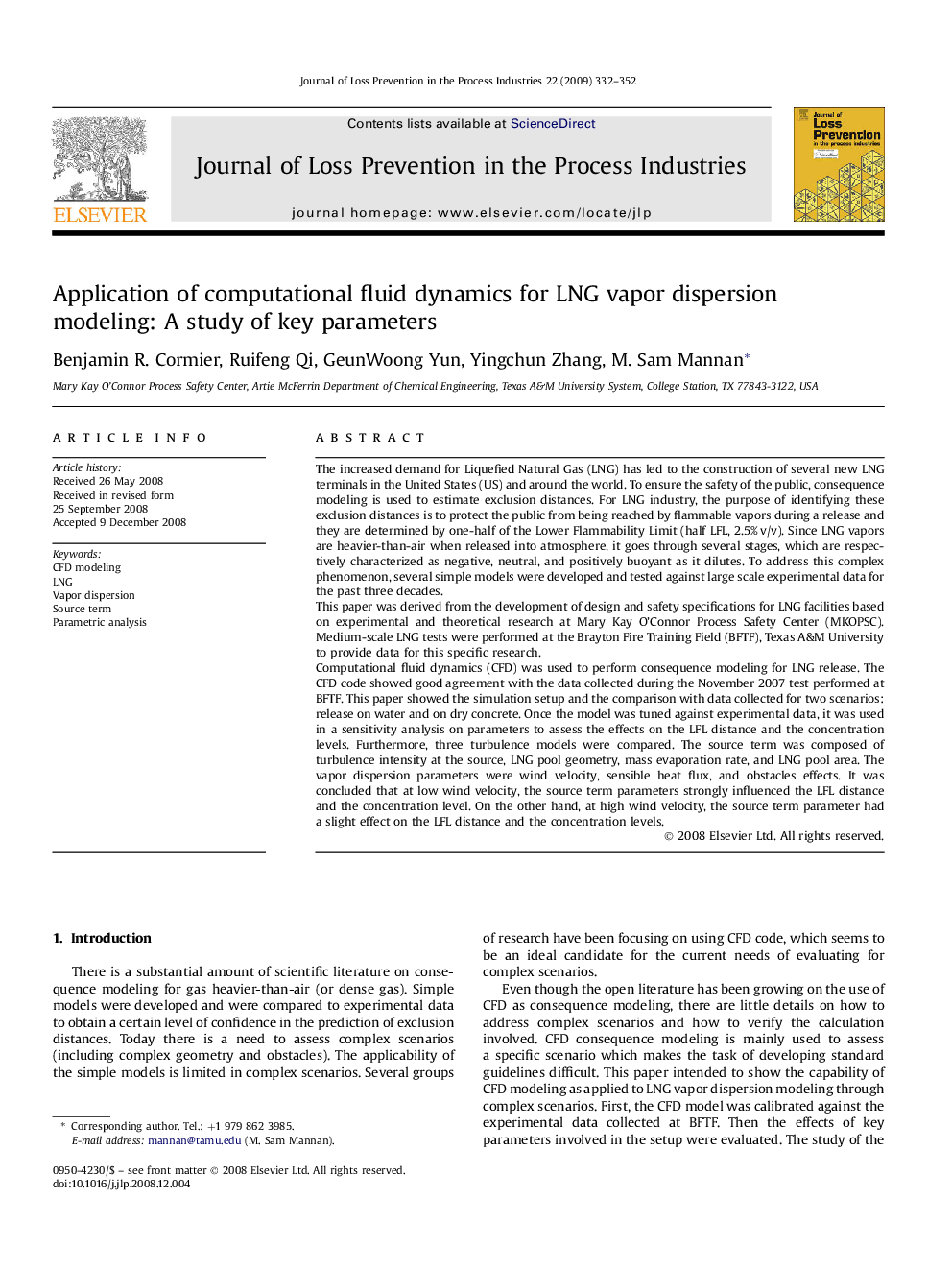| کد مقاله | کد نشریه | سال انتشار | مقاله انگلیسی | نسخه تمام متن |
|---|---|---|---|---|
| 587195 | 878269 | 2009 | 21 صفحه PDF | دانلود رایگان |

The increased demand for Liquefied Natural Gas (LNG) has led to the construction of several new LNG terminals in the United States (US) and around the world. To ensure the safety of the public, consequence modeling is used to estimate exclusion distances. For LNG industry, the purpose of identifying these exclusion distances is to protect the public from being reached by flammable vapors during a release and they are determined by one-half of the Lower Flammability Limit (half LFL, 2.5% v/v). Since LNG vapors are heavier-than-air when released into atmosphere, it goes through several stages, which are respectively characterized as negative, neutral, and positively buoyant as it dilutes. To address this complex phenomenon, several simple models were developed and tested against large scale experimental data for the past three decades.This paper was derived from the development of design and safety specifications for LNG facilities based on experimental and theoretical research at Mary Kay O'Connor Process Safety Center (MKOPSC). Medium-scale LNG tests were performed at the Brayton Fire Training Field (BFTF), Texas A&M University to provide data for this specific research.Computational fluid dynamics (CFD) was used to perform consequence modeling for LNG release. The CFD code showed good agreement with the data collected during the November 2007 test performed at BFTF. This paper showed the simulation setup and the comparison with data collected for two scenarios: release on water and on dry concrete. Once the model was tuned against experimental data, it was used in a sensitivity analysis on parameters to assess the effects on the LFL distance and the concentration levels. Furthermore, three turbulence models were compared. The source term was composed of turbulence intensity at the source, LNG pool geometry, mass evaporation rate, and LNG pool area. The vapor dispersion parameters were wind velocity, sensible heat flux, and obstacles effects. It was concluded that at low wind velocity, the source term parameters strongly influenced the LFL distance and the concentration level. On the other hand, at high wind velocity, the source term parameter had a slight effect on the LFL distance and the concentration levels.
Journal: Journal of Loss Prevention in the Process Industries - Volume 22, Issue 3, May 2009, Pages 332–352